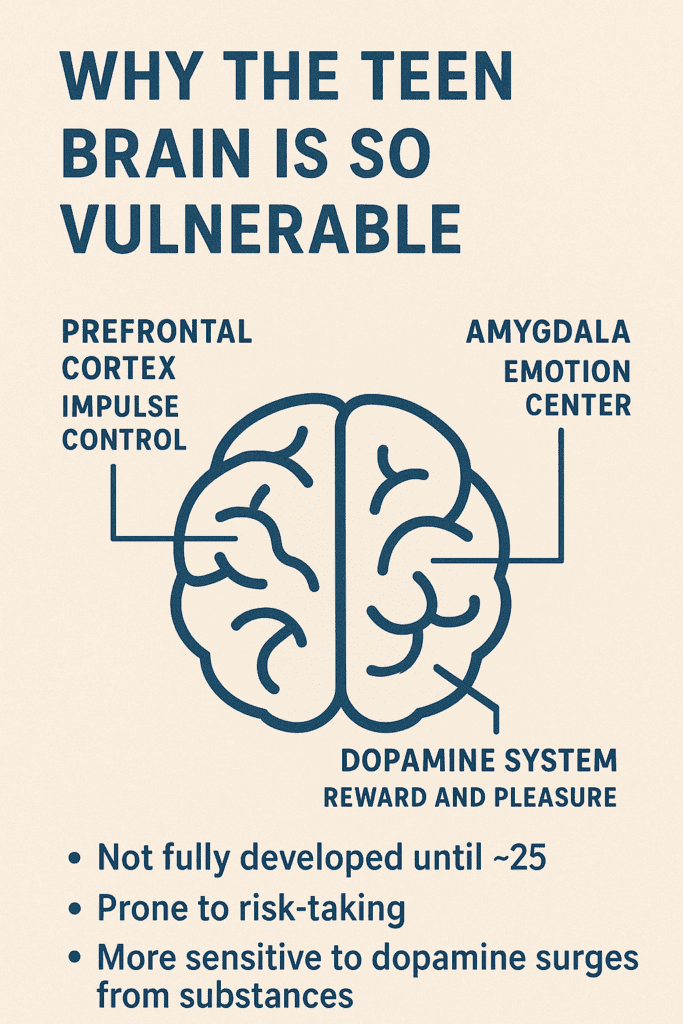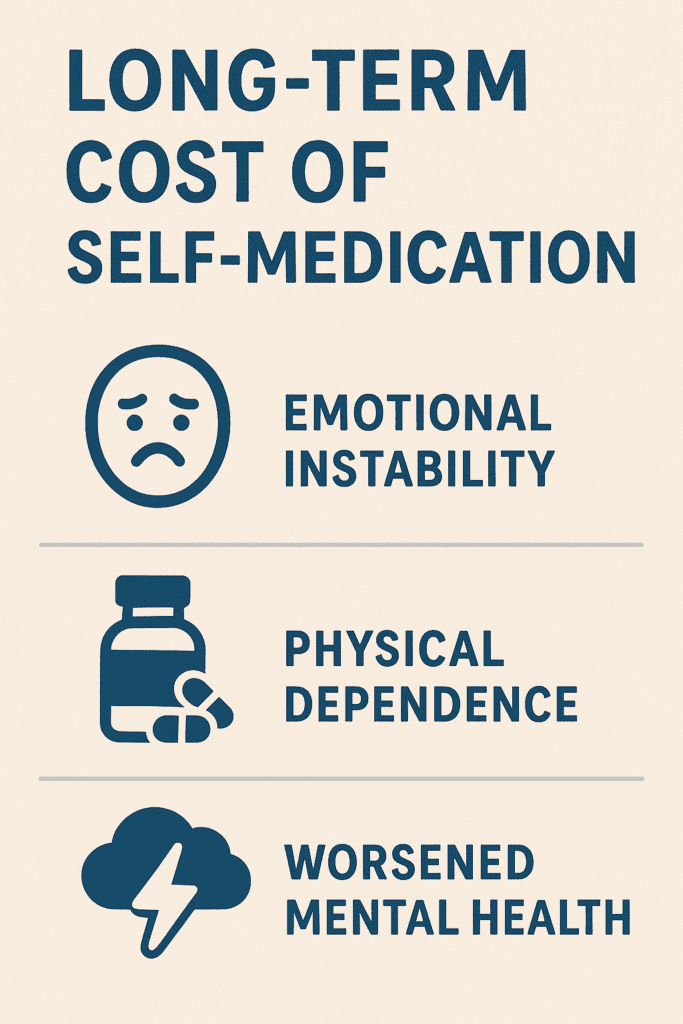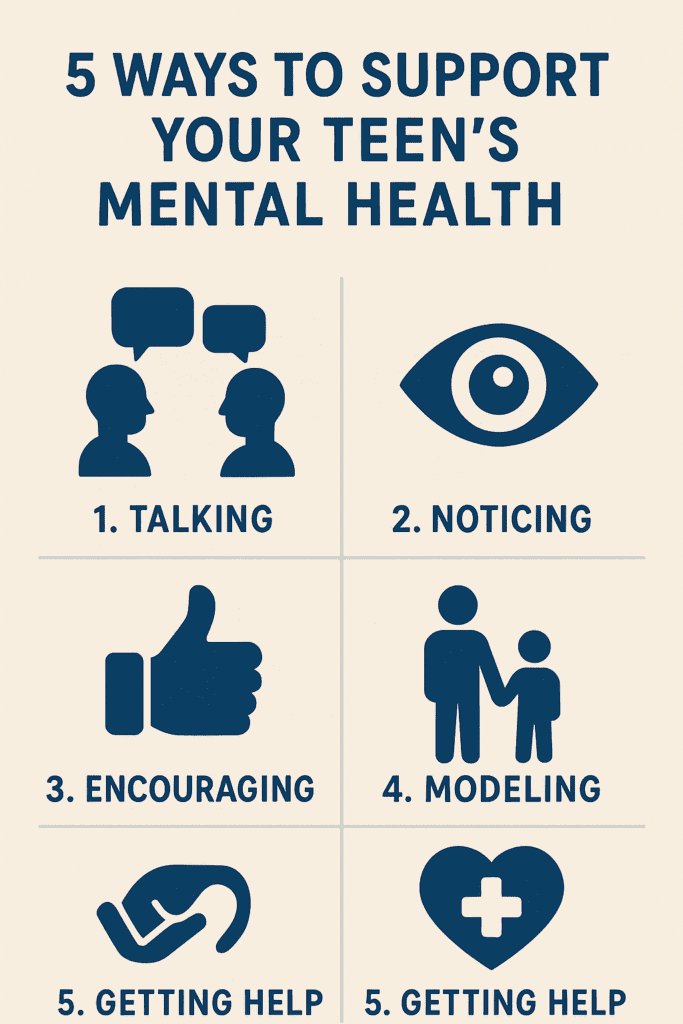Adolescence is a powerful and transformative stage of life. It’s a time of deep emotions, self-discovery, and rapid growth. It’s completely normal for teens and young adults to feel anxious, sad, or overwhelmed at times—these feelings are part of navigating the journey toward adulthood. But when emotions feel too heavy or hard to understand, it’s important to find healthy ways to cope. Without the tools or words to express what’s going on inside, some teens might reach for whatever’s nearby—like alcohol, marijuana, pills, or vapes—hoping to find relief.
It’s not always about rebellion or fitting in. Often, it’s about trying to ease emotional pain in the only way that seems accessible. In moments of distress, these substances can appear to offer comfort: a drink to ease social nerves, a vape to feel a sense of control, or a pill to quiet a restless mind. At first, the relief might feel real. But it doesn’t last—and that’s where the risk lies. Relying on substances before the brain is fully developed can make emotional challenges even more difficult to handle in the long run.
The good news is that there are better, lasting ways to feel better. With the right support, skills, and resources, healing is not only possible—it’s empowering. Choosing healthy ways to manage emotions sets the stage for greater resilience, stronger mental health, and a future full of possibility. The journey might not always be easy, but every step toward understanding and self-care builds a foundation for lasting strength and well-being.
The Appeal of a Quick Fix
Alcohol and drugs like marijuana, nicotine, or misused prescription medications can feel like an easy escape for teens struggling with anxiety or depression. They offer:
- Temporary calm
- A sense of control
- Emotional numbness
- Relief from insomnia or racing thoughts
But that relief is short-lived—and deceptive.
The Science of Self-Medication
The adolescent brain is still developing, especially in areas that regulate emotions and impulses. When substances are introduced during this critical time, they alter the brain’s chemistry and make it harder to function without them.
Key Stats:
- 1 in 3 high school students report persistent feelings of sadness or hopelessness.
[Source: CDC Youth Risk Behavior Survey, 2023] - Nearly 30% of teens with depression report using alcohol or drugs to cope.
[Source: National Institute on Drug Abuse, 2022]
Teens who begin drinking before age 15 are five times more likely to develop alcohol use disorder later in life.
[Source: SAMHSA]

Short-Term “Help” Leads to Long-Term Harm
Substances might feel like a fix in the moment—but they make the problem worse over time.
Negative mental health outcomes linked to teen substance use:
- Worsening depression and anxiety symptoms
- Increased risk of panic attacks, suicidal thoughts, and self-harm
- Decreased motivation, memory, and academic performance
- Higher risk of addiction and co-occurring disorders in adulthood

What Parents Can Do
Your child might not know how to ask for help. Here’s how to keep the door open:
1. Start Conversations Early
Talk about mental health and substance use before there’s a crisis. Keep your tone open, nonjudgmental, and curious. Ask:
- “How do you cope when you feel stressed or anxious?”
- “What do you hear from friends about drinking or smoking to feel better?”
- “Have you ever felt like you needed something to take the edge off?”
2. Recognize Red Flags
Changes in mood, energy, sleep, friend groups, or grades can all signal deeper struggles. Don’t write it off as “just a phase”.
3. Encourage Healthy Coping
Support outlets like:
- Therapy or counseling
- Physical activity
- Journaling or art
- Mindfulness and breathwork
- Meaningful connection to peers or mentors
4. Model Openness and Vulnerability
Let your teen see you manage stress in healthy ways—and admit when you’re struggling too.
5. Seek Support When Needed
If your teen is self-medicating, reach out. Early intervention can prevent a spiral into substance use disorder and chronic mental illness.

The Bottom Line
Substances might seem like a lifeline to a struggling teen—but they’re a lifeline that pulls them deeper into the water. What they really need is connection, support, and healthier tools to navigate emotional pain.
As parents, you have an incredible opportunity to walk beside them—not to fix it all, but to remind them they don’t have to walk it alone.
Because misery might love company—but healing thrives in connection.
